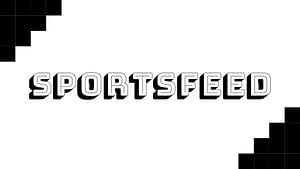Why Starting Pitchers Are Cashing In Big This Offseason
Let’s talk about the jaw-dropping contracts being handed out to starting pitchers this offseason. If you’ve been paying attention to Major League Baseball’s winter meetings, you’ve probably noticed a trend that’s impossible to ignore: starting pitchers are getting paid. And we’re not just talking about the top-tier aces—everyone from reliable innings-eaters to injury-prone veterans is cashing in. So, what’s going on here? Let’s break it down.
First, let’s set the stage. The winter meetings kicked off with a bang when Juan Soto signed a record-breaking 15-year, $765 million deal with the New York Mets. That’s right, not a single penny deferred. It was a historic moment, but Soto’s deal is an outlier—he’s one of the greatest hitters of all time, and he’s still in his mid-20s. As the meetings progressed, though, a different storyline emerged: the skyrocketing value of starting pitchers.
On Tuesday night, a prominent agent summed it up perfectly: “Man, starting pitchers are getting paid.” And he wasn’t kidding. Just hours earlier, Max Fried inked an eight-year, $218 million deal with the New York Yankees, blowing past even the most optimistic projections. Not long after, Nathan Eovaldi secured a three-year, $75 million contract to stay with the Texas Rangers, more than doubling the guarantee of his previous deal. And let’s not forget Alex Cobb, a 37-year-old who battled injuries last season, landing a $15 million, one-year deal with the Detroit Tigers. Clearly, it’s not just the elite arms getting paid—teams are shelling out for depth, too.
The Big Question: Why Now?
Here’s the kicker: starting pitchers have never been relied on less in today’s bullpen-heavy era, yet they’re more expensive than ever. Why? Executives, agents, and coaches at the winter meetings offered a few theories:
- Rarity of Reliable Starters: One general manager pointed out that pitchers who can consistently throw five to six innings and rack up 160 innings over a season are becoming increasingly rare. That scarcity drives up demand—and prices.
- Big-Market Spending: The aggressive pursuit of top-tier free agents by big-market teams like the Yankees and Mets has a trickle-down effect, inflating the market for everyone else.
- Injury Concerns: The rapid rise in arm injuries has made teams paranoid about their pitching depth. As one front-office executive put it, “Teams used to feel good with seven or eight guys they could count on to start games. Now that number is like 11.”
And it’s not just speculation. A presentation at the winter meetings revealed some alarming data: surgeries to repair damaged ulnar collateral ligaments (think Tommy John surgery) at the minor league level have doubled over the past decade. The injury epidemic isn’t just affecting current major leaguers—it’s hitting the pipeline of future talent, too.
How the Yankees and Dodgers Are Leading the Charge
Two of baseball’s most successful franchises, the Yankees and Dodgers, are perfect examples of this new approach. The Yankees already had a strong rotation featuring Gerrit Cole, Carlos Rodón, Luis Gil, Marcus Stroman, and Clarke Schmidt. But after missing out on Soto, they pivoted to Fried, crossing the $200 million threshold for the soon-to-be 31-year-old lefty.
Meanwhile, the Dodgers, fresh off a World Series win over the Yankees, already had a stacked rotation with Yoshinobu Yamamoto, Tyler Glasnow, Shohei Ohtani, Tony Gonsolin, and Dustin May. Yet they still went after Blake Snell, signing him to a five-year, $182 million deal. Dodgers GM Brandon Gomes summed it up: “You feel like you have depth coming in, and sometimes it maintains and sometimes it doesn’t. It’s a little scary of an unknown.”
What’s Next?
The trade market is heating up, with teams looking for alternatives to the high prices of free agency. Names like Dylan Cease, Pablo López, Framber Valdez, and Luis Castillo are generating buzz. Meanwhile, teams like the Baltimore Orioles, Toronto Blue Jays, and San Francisco Giants are still hunting for frontline starters.
So far, 12 starting pitchers have signed deals totaling $788.5 million, already 63% of last year’s spending in this category. And with names like Corbin Burnes and Jack Flaherty still on the market, the spending spree is far from over. One thing is clear: even in an era where starting pitching is supposedly “out of vogue,” it’s still commanding a premium.
Originally Written by: Jeff Passan





















